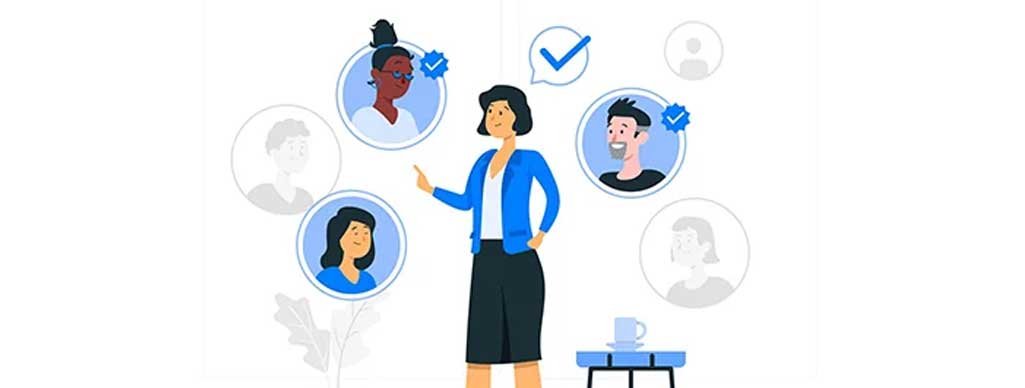Suman Senapati, HPCL
suman.senapati@hpcl.in
Mr Suman Senapati has been working at HPCL for the past 7 years, in various roles, which include Refinery operations, Technical development and Digital teams. He was re-assigned to the PRCC department in September 2023.

Abstract
The digital transformation era has revolutionized information exchange, emphasizing the crucial role of networking within organizational structures. Traditional PR methods fall short in today’s interconnected landscape, necessitating the integration of modern technologies like artificial intelligence (AI) to effectively monitor, analyse, and respond to evolving communication paradigms. AI not only optimizes external communications but also fosters internal collaboration, enhancing productivity and organizational cohesion. By automating routine tasks and facilitating seamless networking, AI empowers PR professionals to focus on strategic initiatives aimed at strengthening internal networks and driving organizational success.
As AI continues to evolve, its integration into PR practices promises endless possibilities. From social media monitoring to stakeholder engagement bots and content generation, AI-driven solutions will streamline communication processes, ensure brand consistency and enhance engagement across various stakeholders. Moving forward, as AI algorithms become increasingly sophisticated, PR professionals will be equipped with powerful tools to navigate the dynamic communication landscape, driving progress and prosperity for all stakeholders. The era of AI in PR heralds a future where connectivity, collaboration, and communication transcend boundaries, shaping a more inclusive and innovative industry landscape.
Main Content
In the era of digital transformation, the way people consume and exchange information has undergone a profound shift, amplifying the significance of networking within organizational frameworks. Social media platforms, online forums, and news outlets have become primary channels through which employees and stakeholders connect and engage, influencing internal dynamics and external perceptions. As organizations navigate this interconnected landscape, traditional PR approaches prove insufficient, prompting the strategic integration of modern technologies to monitor, analyze, and respond effectively to evolving communication paradigms.
Amidst this context, the role of PR extends beyond external reputation management to encompass fostering internal connectivity and collaboration among employees. In this dynamic environment, leveraging artificial intelligence (AI) becomes increasingly imperative for PR professionals, empowering them with tools to facilitate seamless networking and bridge gaps both within and beyond the organization. AI-driven solutions offer multifaceted benefits, from enhancing media monitoring capabilities to deploying customer engagement bots and streamlining content creation processes. By harnessing AI technologies, PR teams can not only optimize external communications but also facilitate internal networking initiatives, fostering a culture of collaboration and innovation within the organization.
Moreover, AI enables the automation of routine tasks, freeing up time for PR professionals to focus on strategic initiatives aimed at strengthening internal networks and driving organizational cohesion. Through the strategic deployment of AI-powered solutions, PR teams can play a pivotal role in nurturing meaningful connections among employees and stakeholders, thereby enhancing productivity, morale, and ultimately, the organization’s overall success. This article seeks to delve into the transformative potential of AI in enhancing both external PR efforts and internal networking dynamics.
Social Media Monitoring
Traditional approaches to social media monitoring typically involve manual tracking of brand mentions, hashtags, and keywords across various social media platforms. Often, this method heavily relies on human resources to sift through large volumes of data, which can be time-consuming and prone to oversight. Moreover, traditional monitoring tools may lack the erudition needed to analyze sentiments accurately or identify emerging trends effectively. Keeping this in mind, the development of AI-based solutions, which allow more comprehensive monitoring techniques, is the need of the hour to handle such complex tasks by PR teams. As businesses increasingly recognize the importance of monitoring social media for reputation management and market insights, there’s a growing demand for AI-powered tools that can automate and streamline the process.
AI offers a range of advanced options for social media monitoring, leveraging natural language processing (NLP) and data analytics to extract valuable insights from social media data. One such option is sentiment analysis, which involves using classification algorithms to gauge the sentiment associated with brand mentions, enabling companies to understand how their audience perceives them in real time. Another option is trend analysis, where AI algorithms can identify patterns and trends within social media conversations, helping businesses stay ahead of emerging topics and discussions. Additionally, AI-powered tools can automate the process of identifying influencers and target audiences, allowing companies to optimize their outreach strategies for maximum impact. A wide array of options of AI-based social media monitoring services exist that employ AI algorithms, which include Hootsuite, Brandwatch, Sprout Social and so on.
On the other hand, sentiment analysis can be performed using open-source Python libraries like NLTK and TextBlob. NLTK library has a pre-trained sentiment analyser named VADER (Valence Aware Dictionary and sentiment Reasoner), which is very well suited to handle short sentences, typically used in social media. The polarity scores function associated with VADER returns a dictionary of scores against neutral, negative, positive and a compound score. VADER would ideally work well with Tweets or captions, which have a limited length. Similarly, TextBlob employs a Lexicon-based approach for performing sentiment analysis, which involves the use of a dictionary of words and phrases that are associated with positive and negative sentiment to identify the sentiment of a piece of text. The input text message would be treated as a bag of words, where each word would be associated with an individual score used for computing the final sentiment through a pre-determined pooling operation. The TextBlob algorithm returns the polarity and subjectivity of the sentence. Polarity returns a score to determine the inclination of the text towards negative or positive sentiment, while subjectivity quantifies the quantum of personal opinion and factual information contained in the input text. These libraries can be used along with Python-based web frameworks like Flask and Django to develop in-house sentiment analysis solutions, which can fetch data from Social media developer accounts using their respective APIs.


Stakeholder engagement bots
Traditional approaches to customer or stakeholder engagement bots often involve scripted responses or decision trees that provide predefined answers to common queries. These bots typically rely on simple rule-based algorithms to interact with users, which can result in limited functionality and frustrating user experiences when faced with complex inquiries or nuanced conversations. However, these conventional methods have paved the way for the development of AI-based solutions by highlighting the need for more intelligent and adaptable systems. As businesses increasingly recognize the importance of providing personalized and responsive customer support, there’s a growing demand for AI-powered bots that can understand natural language, learn from interactions, and offer more sophisticated assistance.
AI offers a range of advanced options for engagement bots, leveraging various deep-learning techniques to enhance interaction capabilities. One such option is chatbots equipped with natural language processing (NLP) capabilities, which enable them to understand and respond to user queries conversationally. These AI-powered bots can analyze the context of a conversation, interpret user intent, and provide relevant and personalized responses, leading to more satisfying user experiences. Additionally, AI-driven recommendation engines can be integrated into customer engagement bots to offer personalized product recommendations or tailored assistance based on user preferences and behaviour patterns. In the present day, commercial AI chatbots, such as GPT-4.0, Drift and Ada, can be easily integrated with existing web architecture providing a seamless chatbot interaction with the customer. On the other hand, many open-source models, such as Bard, are available for tuning and deployment.
Additionally, chatbots can be built from scratch and trained on specific intent using nothing but a tensorflow library which finds application in building neural networks. Based on the extent of exhaustiveness of the training dataset, the accuracy of the chatbot can be tuned.


Content generation
Traditional methods of content generation for PR purposes involve not only crafting textual content but also designing visual elements like images and graphics. PR professionals traditionally undertake manual processes that include research, brainstorming, and design to create content that effectively conveys their messages and promotes their clients or organizations. However, these conventional methods often prove time-consuming and resource-intensive, especially when ensuring consistency in branding and visual identity across various platforms. Despite these challenges, traditional approaches have set the stage for the emergence of AI-based solutions, notably generative AI, which offers more efficient and scalable content creation methods.
Generative AI presents a groundbreaking solution for content generation in PR-related roles. By harnessing machine learning algorithms and vast datasets, generative AI systems can automatically produce not only written content but also visually captivating images and graphics tailored to specific communication objectives. These AI-driven tools streamline the content creation process, enabling PR professionals to address diverse content needs more effectively while upholding brand consistency. With generative AI, PR teams can generate compelling multimedia content at scale, thereby freeing up time for strategic initiatives and augmenting overall communication endeavours. Moreover, the utilization of generative AI facilitates the creation of content for both external and internal communications, enhancing engagement and connectivity across various stakeholders within and outside the organization. Several commercial content and image generators are available, which include GPT-4.0 for text generation and Midjourney for image generation.
Similar results can be achieved through open-source fine-tuned models developed for either text or image generation. Among available open-source models, SpaCy and Stable Diffusion are some of the most well-known models for text and image generation, respectively. These models can be downloaded in any Python environment directly from the Python package manager or GitHub.
AI and beyond
The seamless integration of AI-driven solutions into PR practices not only enhances external reputation management but also fosters internal connectivity and collaboration among employees. In this ever-expanding realm of technology, as time progresses, various other use cases would be revealed, which would leave a lasting impression on how PR is practised throughout the industry.
As AI algorithms evolve and AI-driven solutions become increasingly sophisticated, PR professionals will find themselves equipped with powerful tools to navigate the dynamic landscape of communication with confidence and effectiveness. With a commitment to embracing innovation and harnessing the potential of AI, organizations can pave the way for a future where connectivity, collaboration, and communication surpass all boundaries, driving progress and prosperity for all.
Posted in HR Technology | No Comments »
Recent Articles
- The Communication Network: Public Relations in the Digital Era
- Machines Are Learning, How About You?
- Positioning Exponential Technology – Leveraging for Effective Industrial Relations
- AI – Not Just Another Tech
- How AI and Automation are Redefining Talent Acquisition
- HR Analytics – Enabler for Strategic Business Partnership
- Machine Learning applications in the domain of HR Analytics
- Pandemic provided the tailwind to HR technology sector
- Gamification using Digital Twin for Leadership Management
- HR Tech-Options to evaluate
- Metaverse & Future Workplace
- Beat Burnout by investing in HR Technology and Automation
- How to Harness the Power of AI in HRM
- Driving innovation & Experimentation through Digital HR Transformation & Building Employee Experience
- HR Tech Trends
- Decoding the ‘Digital Personal Data Protection Bill 2022’
